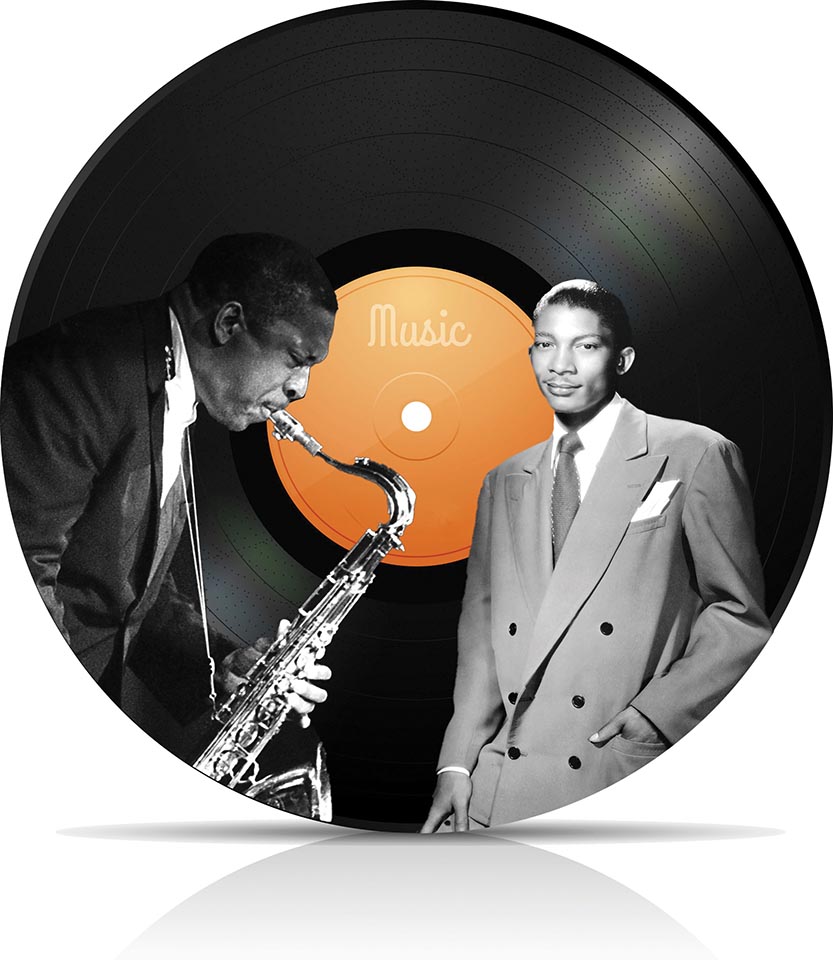Professor Michael Coyle examines one peculiar record that made waves in the history of Black music.

Jazz legend John Coltrane made only one record with a vocalist — Johnny Hartman, a crooner who hadn’t yet found success when the album was released in 1963. Why would Coltrane choose Hartman, a crooner, over a jazz singer? This is the question Professor of English Michael Coyle addressed in an essay that will be published in Cambridge University Press’ forthcoming Companion to Jazz and Modernism.
Coyle’s interest in music dates back to his childhood, when he discovered his love for rock music. From there, he began to explore earlier genres, such as jazz. Coyle refers to himself as a “modernist scholar” — he’s interested in the emergence of modern rhythms both in music and in poetry.
Coyle started researching the Coltrane-Hartman collaboration when a performer he brought to a Core Challenges of Modernity presentation adapted the record. It was then that he noticed the stark difference John Coltrane and Johnny Hartman presented against Coltrane’s other records. Coyle began to delve into the history of crooning, a style made possible only after the commercial availability of the microphone in 1927. Before microphones, the predominant singing style was shouting — a skill mastered by loud performers such as opera singers — and it allowed them to project their voices without the help of technology.
“There was, for instance, in 1930s Kansas City, a guy named Big Joe Turner [who] learned to sing in crowded Prohibition-era ballrooms in Kansas City,” says Coyle. “His voice was so big, that at a certain point, the guy on stage would give him a signal and he’d start singing from behind the bar; his voice could fill the room.”
With the introduction of the microphone, the Big Joe Turners of the music scene fell out of style; many performers stopped belting and began to sing softly. Audiences grew keen to soft-voiced performers, such as Rudy Vallée, because these performers could express a wide range of gentler emotions.
Vallée’s soft music achieved dramatic highs and subtle lows. His innovative crooning style inspired household names such as Bing Crosby, who also achieved astounding success.
“The first crooners,” Coyle says, “had an electrifying effect on the nation.”
Crooning, which was pioneered by white performers such as Vallée and Crosby, was then adapted by Black musicians. This is where its history gets interesting. The ability of Black performers to record their work and adapt the recordings of others led to quick, mass innovation.
“Crooning is possibly the only 20th-century American style that was developed first by white performers before being adopted and adapted by Black performers,” says Coyle. “So there’s this pause in time before crooning gets taken up by Black performers. To them, crooning has always represented modernity — a refusal to allow other people to tell them what it means to be Black.”
This was when Coltrane put out his version of a crooning record featuring Hartman — who cemented his legacy with this record, filling its long tracks with slow, swirling melodies. Whereas Vallée crooned rhythmically, rushing to the next word, Hartman crooned patiently, expanding
the style.
“Lots of people who don’t like John Coltrane because he’s not melodic enough love this record, because it’s just beautiful,” says Coyle.
Altogether, John Coltrane and Johnny Hartman was unlike any record that Coltrane had made. So why did he make a crooning record anyway?
“There were a lot of reasons,” says Coyle. “Coltrane’s music was so radical at that point that white jazz critics were attacking him as being anti-jazz. So he was under pressure from his manager to make a traditional-sounding record.”
The choice of whom to feature on vocals was then entirely Coltrane’s. It came as a surprise that Hartman, a crooner who was unknown on the mainstream scene, was chosen. Coyle and audiences agree with the choice.
“It’s gentle and it’s lyrical. You think, ‘How does anybody sing that way?’ It’s just perfect.”
